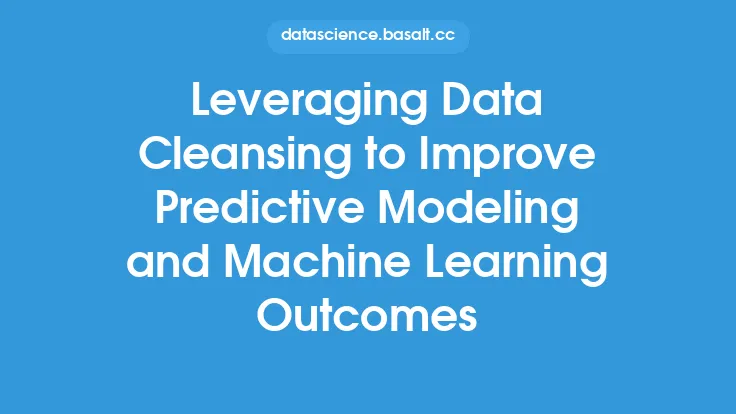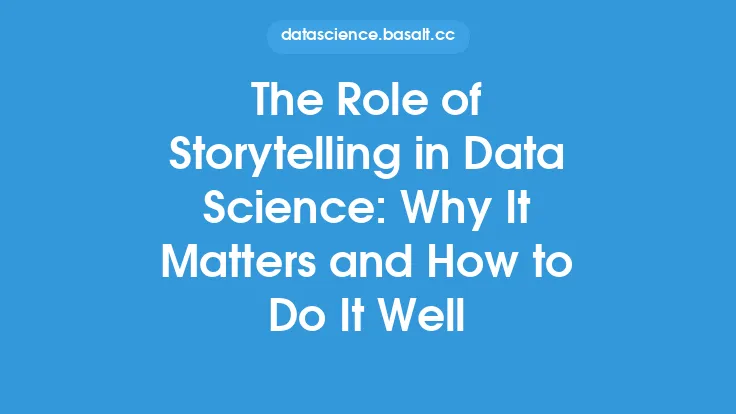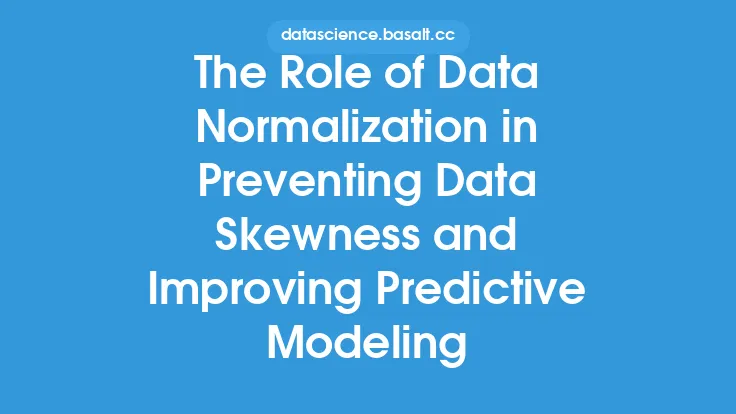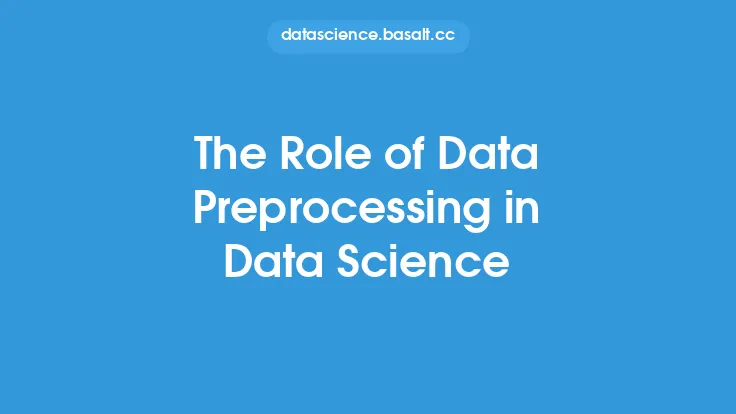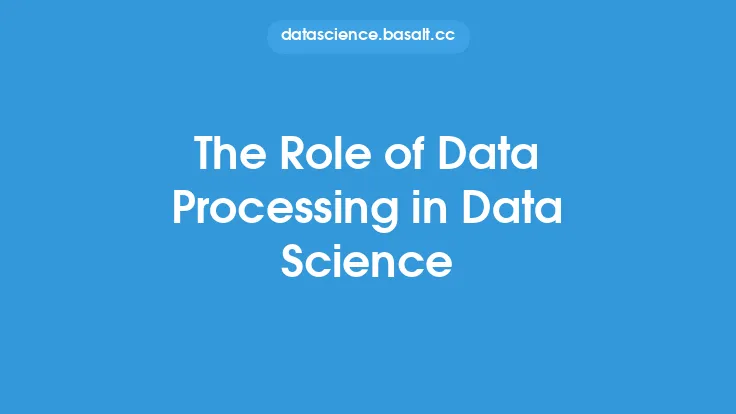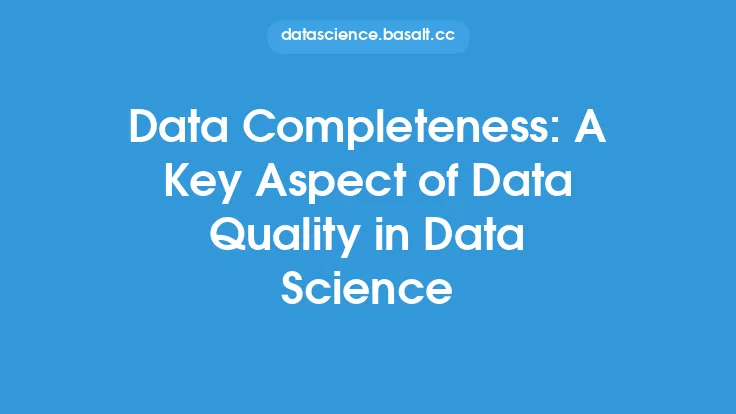Predictive modeling is a crucial aspect of data science that involves using statistical and machine learning techniques to forecast future events or behaviors based on historical data. It is a key component of data mining, which is the process of automatically discovering patterns and relationships in large datasets. Predictive modeling has become an essential tool for organizations to make informed decisions, identify opportunities, and mitigate risks. In this article, we will delve into the fundamentals of predictive modeling, its importance, and the various techniques used to build predictive models.
What is Predictive Modeling?
Predictive modeling is a type of data analysis that uses statistical and machine learning algorithms to predict the likelihood of a particular event or behavior occurring. It involves analyzing historical data to identify patterns and relationships between variables, and then using this information to make predictions about future events. Predictive models can be used to forecast a wide range of outcomes, including customer behavior, financial performance, and equipment failures. The goal of predictive modeling is to provide insights that can inform decision-making and drive business outcomes.
Key Components of Predictive Modeling
There are several key components of predictive modeling, including data preparation, model selection, model training, and model evaluation. Data preparation involves collecting, cleaning, and transforming the data into a format that can be used for modeling. Model selection involves choosing the most appropriate algorithm and technique for the problem at hand. Model training involves using the historical data to train the model, and model evaluation involves testing the model's performance on a separate dataset. The choice of algorithm and technique will depend on the type of problem being addressed, the size and complexity of the dataset, and the level of accuracy required.
Types of Predictive Models
There are several types of predictive models, including linear regression, decision trees, random forests, support vector machines, and neural networks. Linear regression is a simple and widely used technique that involves modeling the relationship between a dependent variable and one or more independent variables. Decision trees are a type of machine learning algorithm that involve splitting the data into subsets based on the values of the input variables. Random forests are an extension of decision trees that involve combining multiple trees to improve the accuracy and robustness of the model. Support vector machines are a type of algorithm that involve finding the hyperplane that maximally separates the classes in the feature space. Neural networks are a type of machine learning algorithm that involve modeling complex relationships between variables using a network of interconnected nodes.
Predictive Modeling Process
The predictive modeling process involves several steps, including problem definition, data collection, data preparation, model selection, model training, and model evaluation. Problem definition involves defining the problem or opportunity that the predictive model is intended to address. Data collection involves gathering the data that will be used to train and test the model. Data preparation involves cleaning, transforming, and formatting the data into a format that can be used for modeling. Model selection involves choosing the most appropriate algorithm and technique for the problem at hand. Model training involves using the historical data to train the model, and model evaluation involves testing the model's performance on a separate dataset.
Predictive Modeling Techniques
There are several predictive modeling techniques that can be used to build predictive models, including regression, classification, clustering, and dimensionality reduction. Regression involves modeling the relationship between a dependent variable and one or more independent variables. Classification involves predicting a categorical outcome based on one or more input variables. Clustering involves grouping similar observations into clusters based on their characteristics. Dimensionality reduction involves reducing the number of input variables to improve the accuracy and efficiency of the model.
Importance of Predictive Modeling
Predictive modeling is an essential tool for organizations to make informed decisions, identify opportunities, and mitigate risks. It can be used to forecast customer behavior, predict financial performance, and identify potential equipment failures. Predictive modeling can also be used to optimize business processes, improve operational efficiency, and reduce costs. The insights gained from predictive modeling can be used to drive business outcomes, improve customer satisfaction, and increase revenue.
Challenges and Limitations of Predictive Modeling
There are several challenges and limitations of predictive modeling, including data quality issues, model complexity, and interpretability. Data quality issues can affect the accuracy and reliability of the model, and model complexity can make it difficult to interpret the results. Additionally, predictive models can be sensitive to changes in the underlying data and may require frequent retraining to maintain their accuracy. Furthermore, predictive models can be biased if the training data is not representative of the population, and this can lead to inaccurate predictions and unfair outcomes.
Conclusion
Predictive modeling is a powerful tool for organizations to make informed decisions, identify opportunities, and mitigate risks. It involves using statistical and machine learning techniques to forecast future events or behaviors based on historical data. The predictive modeling process involves several steps, including problem definition, data collection, data preparation, model selection, model training, and model evaluation. There are several types of predictive models, including linear regression, decision trees, random forests, support vector machines, and neural networks. Predictive modeling has several applications, including customer behavior prediction, financial forecasting, and equipment failure prediction. However, it also has several challenges and limitations, including data quality issues, model complexity, and interpretability. By understanding the fundamentals of predictive modeling and its applications, organizations can unlock the full potential of their data and drive business outcomes.
